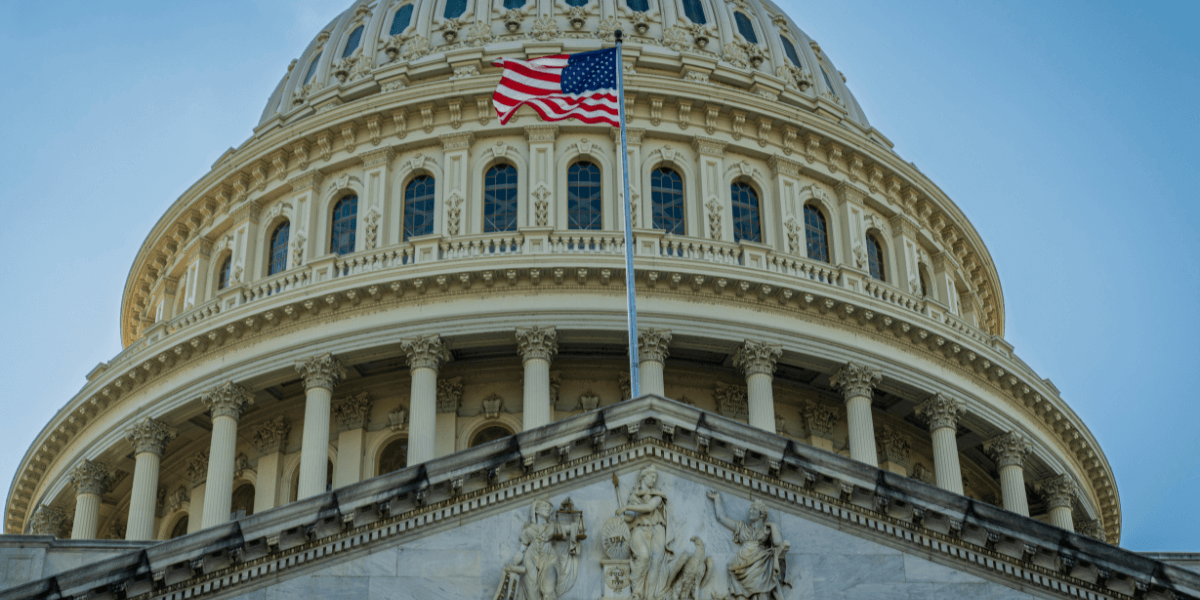
With just weeks to go before US citizens head to the polls to elect the next President of the United States, we take the opportunity to look back at previous elections and how gold reacted to the uncertainty.
1980: Ronald Reagan (R) vs. Jimmy Carter (D)
- Campaign: The race for the White House took place amid what economists call the ‘Great Inflation’, and a few months before the election the rate of inflation reached more than 14%. Geopolitical tensions were high, the Cold War was intensifying and the Iran hostage crisis – a diplomatic standoff that saw 52 Americans held hostage – was still ongoing. Gold prices remained elevated as investors weighed up what each candidate might mean for the economy and geopolitics.
- Aftermath: Post-election, gold began to fall as markets at least had some certainty as to the approach the new administration would take on these issues. Inflation began to fall, and the Iran hostages were released on inauguration day. By the middle of 1982, these issues had largely receded, and gold returned to pre-1980 levels.
1984: Ronald Reagan (R) vs. Walter Mondale (D)
- Campaign: The economic landscape in 1984 appeared much more stable than in 1980 – inflation and unemployment were down, and GDP was up. The Reagan campaign made the economic recovery and relative stability a key talking point as they toured across the country. Reflecting the greater sense of certainty and economic optimism, gold traded at below $400/oz throughout most of 1984, after peaking at $850/oz in 1980.
- Aftermath: President Reagan was re-elected in a landslide victory and the continuation of his economic policies brought more certainty to the markets, leading to gold falling below $300/oz by early 1985. By the end of 1985 President Reagan signed the Gold Bullion Coin Act into law, establishing the American Eagle gold bullion coin.
1988: George H. W. Bush (R) vs. Michael Dukakis (D)
- Campaign: Gold prices were falling once again in the months leading up to the 1988 election. The Republican candidate George H. W. Bush emphasised the successes of Reagan’s Republican administration – particularly on crime and the economy – and was comfortably ahead in most polls leading up to the election. This reduced safe-haven demand for gold.
- Aftermath: Given Bush’s landslide victory did not come as a surprise, and that his policies represented (at least to some degree) continuity, safe-haven demand for gold reduced further, with prices declining until late 1989.
1992: Bill Clinton (D) vs. George H. W. Bush (R)
- Campaign: The 1990-1991 recession, which saw gold prices spike, was still fresh on voters’ minds in 1992. The Clinton campaign made this a key part of their message, with a campaign official coining the phrase ‘It’s the economy, stupid!’. In the context of the past few years, Clinton’s policies were generally perceived as potentially stabilising and polls indicated Clinton was the clear favourite. As a result, the election seems to have barely impacted gold.
- Aftermath: A few months after Clinton’s victory, gold surged to over $405/oz, a 23% rise from January 20th, the day Clinton became President. However, this appears to have been caused more by global concerns about inflation and a currency crisis in Europe.
1996: Bill Clinton (D) vs. Bob Dole (R)
- Campaign: The election in 1996 took place during a period of sustained economic growth combined with relatively low inflation. As a result gold prices remained relatively range bound in the run up to the vote.
- Aftermath: Clinton’s re-election, and the continuity of policy that followed, led to continued economic stability which reduced safe-haven demand for gold. After starting Clinton’s first term in office in 1993 at $329/oz, gold was trading at close to $250/oz by the middle of 1999. Central banks were selling gold after a period of economic stability and increased confidence.
2000: George W. Bush (R) vs. Al Gore (D)
- Campaign: The uncertainty of the very close race between Republican George W. Bush and Democrat Al Gore appeared to help provide a floor supporting the gold price, but otherwise prices remained fairly stable in the weeks before the election.
- Aftermath: The contested results of the 2000 election led to a brief spike in gold prices due to the uncertainty and the legal battle that ensued. Once George W. Bush was confirmed as the winner, gold prices stabilized and fell throughout early 2001.
2004: George W. Bush (R) vs. John Kerry (D)
- Campaign: By the end of 2003, gold prices were back up above $400/oz for the first time since 1988 as geopolitical tensions rose, oil prices were high and the US Dollar was weakening. The uncertainty about which candidate would win win added to the safe-haven demand for gold.
- Aftermath: Bush’s re-election brought a short-lived dip in gold prices, but ongoing concerns about the Iraq War and the economy led to a renewed rise in the months following the election.
2008: Barack Obama (D) vs. John McCain (R)
- Campaign: The 2008 election occurred during the global financial crisis, which caused a significant increase in gold prices as investors sought safe-haven assets amid market turmoil. Uncertainty about how either Barack Obama or John McCain would address the crisis drove demand for gold.
- Aftermath: Obama’s victory did little to immediately stabilize the markets, and gold prices continued to rise as the global financial crisis deepened. The introduction of massive economic stimulus measures (e.g. quantitative easing) further fuelled demand for gold as a hedge against inflation.
2012: Barack Obama (D) vs. Mitt Romney (R)
- Campaign: Gold prices had peaked at close to $1,900/oz in mid to late 2011 as investors took action to shield their portfolios from the potential fallout of the debt ceiling crisis. By the time the campaign was in full swing in 2012 concerns about the global economy remained, despite some stabilization following the crisis.
- Aftermath: Obama’s re-election saw gold decline throughout late 2012 and into 2013 as the immediate uncertainty faded, but prices remained elevated due to ongoing economic concerns, including debates over fiscal policy and the debt ceiling.
2016: Donald Trump (R) vs. Hilary Clinton (D)
- Campaign: In 2016 the political landscape was highly unpredictable, and the US election took place after the UK’s vote to leave the European Union which had potentially major geopolitical and economic implications. This uncertainty leading to significant volatility in gold prices. The possibility of a Trump victory, which many investors viewed as a wildcard, drove gold prices higher in the weeks leading up to the election. After starting the year at close to $1,100/oz gold was trading at closer to $1,350/oz just a few months later as investors sought ‘safe haven’ assets to help stabilise and protect their portfolios.
- Aftermath: In the days and weeks following the election, gold prices fell sharply as markets began to anticipate potential economic stimulus and tax cuts under Trump’s administration, ending the year closer to $1,100/oz.
2020: Joe Biden (D) vs. Donald Trump (R)
- Campaign: The 2020 election was also marked by a sense of uncertainty, exacerbated by the COVID-19 pandemic and growing geopolitical risk. Gold prices rose significantly in the months leading up to the election as investors sought safety amid fears of economic and geopolitical instability.
- Aftermath: Following Joe Biden’s victory, gold prices initially spiked but then declined as the market focused on the prospects of economic recovery under a new administration. The transition period, marked by political tensions, kept gold prices volatile until the inauguration. Prices spiked on 6th January 2021 with the LBMA AM price reaching $1,957.20/oz as protestors were set to gather in Washington DC in what later turned into the storming of the Capitol building.
Conclusion
US presidential elections have historically had a significant impact on gold prices, with movements reflecting investor sentiment, economic conditions, and political uncertainty. In many cases, gold has tended to rise in the lead-up to elections due to increased market anxiety and the search for safe-haven assets. The aftermath of elections can bring further volatility, depending on the outcome and the market's perception of the new administration’s policies.





